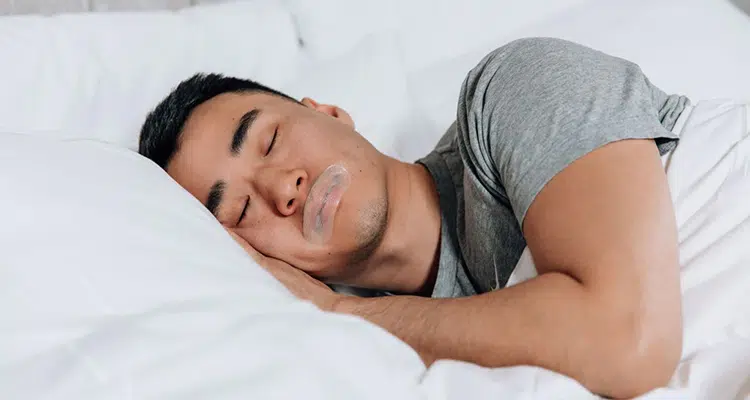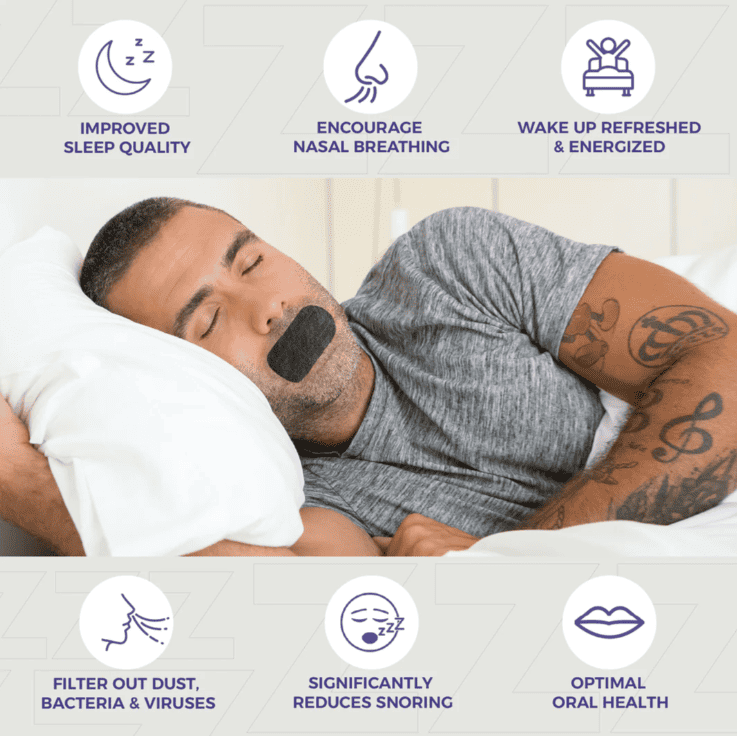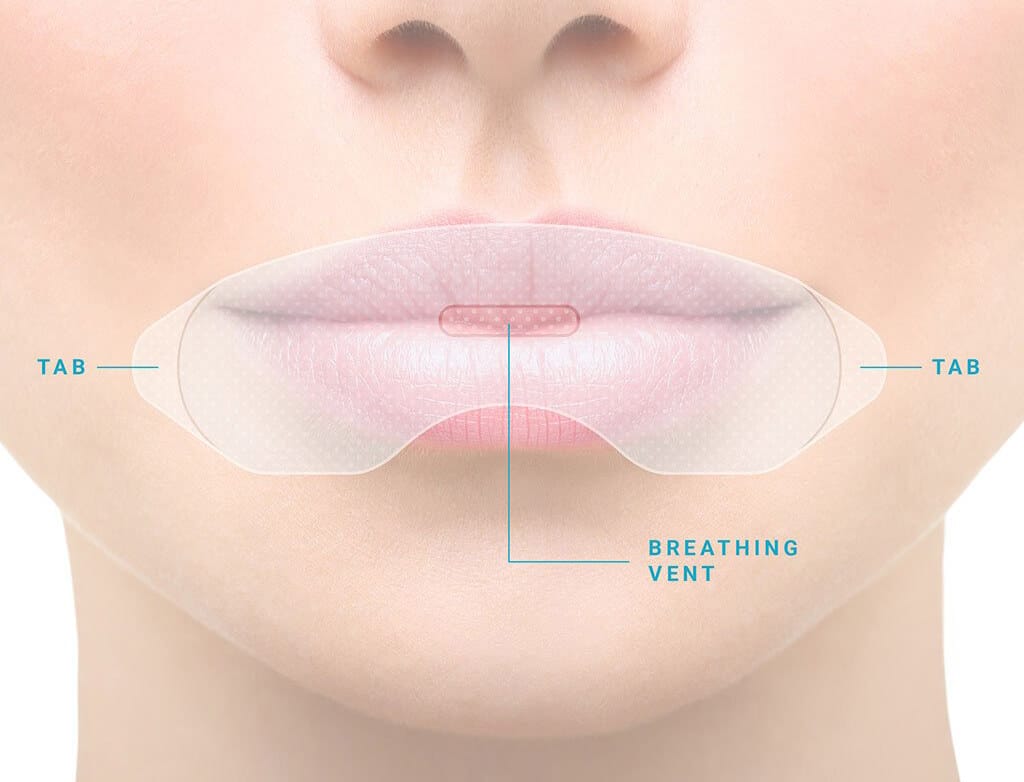The Ultimate Guide to Mouth Tape for Sleep: Benefits, How to Use It, and Why It’s Gaining Popularity

If you’ve been struggling with poor sleep quality, snoring, or dry mouth at night, you may have come across the concept of mouth tape for sleep. This practice, once reserved for niche groups, has rapidly gained popularity for its potential to enhance sleep quality and breathing. In this comprehensive guide, we will dive deep into the benefits of mouth taping, how it works, and how to implement it safely into your nighttime routine.
What Is Mouth Taping for Sleep?
Mouth taping refers to placing a specially designed tape over your mouth before going to bed to encourage nasal breathing. The goal is to prevent mouth breathing, which can lead to snoring, disrupted sleep, and other health issues. By taping the mouth shut, it forces the individual to breathe through the nose during sleep.
Nasal breathing is not only more efficient but also offers numerous health benefits, such as improved oxygen exchange and better filtration of air. Those who practice mouth taping for sleep report fewer interruptions at night, reduced dry mouth, and even better energy levels the next day.

How Does Mouth Taping Work?
The science behind mouth taping is simple yet profound. When we breathe through the nose, we benefit from the filtration, humidification, and temperature regulation of incoming air. In contrast, mouth breathing bypasses these mechanisms, leading to potential issues such as dehydration, snoring, and poor sleep quality.
By using mouth tape for sleeping, you essentially train yourself to become a nasal breather throughout the night. This can help prevent a range of issues, from dry mouth and snoring to even more serious conditions like sleep apnea.

Mouth Taping Benefits
- Improved Sleep Quality
One of the most significant benefits of mouth taping is better sleep. Nasal breathing supports proper oxygen exchange, which leads to deeper and more restorative sleep cycles. If you often wake up feeling groggy or tired, switching to nasal breathing could make a noticeable difference. - Reduction in Snoring
Mouth breathing is a common cause of snoring. By keeping the mouth closed with tape, airflow is redirected through the nasal passages, which can significantly reduce or even eliminate snoring. This can also benefit bed partners, improving their sleep quality. - Less Dry Mouth and Throat
Waking up with a parched mouth or sore throat is a common complaint among mouth breathers. Nasal breathing helps retain moisture in the airways, reducing the likelihood of waking up with a dry mouth. - Better Oral Health
Continuous mouth breathing can contribute to dental issues such as cavities, gum disease, and bad breath. Nasal breathing keeps the mouth more moist, which helps maintain a healthy balance of bacteria and protects the teeth and gums from decay. - Supports Proper Facial Development (for Children)
For growing children, nasal breathing is essential for proper facial development. Encouraging mouth taping (with caution and supervision) can prevent issues like overcrowded teeth, underdeveloped jaws, and other orthodontic problems. - Improved Breathing and Reduced Sleep Apnea
Mouth taping can also be beneficial for individuals with mild obstructive sleep apnea, as nasal breathing encourages more open airways and reduced airway obstruction.

How to Use Mouth Tape for Sleeping: A Step-by-Step Guide
If you’re ready to incorporate mouth tape for sleeping into your nighttime routine, here’s how to do it safely:
- Choose the Right Tape
Opt for tapes designed specifically for mouth taping for sleep. These tapes are hypoallergenic, breathable, and easy to remove. Avoid using standard adhesive tapes, which may cause irritation or discomfort. - Clean Your Skin
Before applying the tape, clean the area around your mouth to ensure the tape adheres properly and doesn’t peel off during the night. - Apply the Tape
Place a small piece of tape horizontally across your lips, ensuring it’s not too tight but still effective in keeping your mouth closed. Some people prefer to use a strip of tape in the shape of an “H” to ensure easier removal in the morning. - Test the Tape
If it’s your first time taping, try it for a short nap or a few hours before using it overnight. This allows you to get used to the sensation and ensures you’re comfortable with nasal breathing. - Practice Good Sleep Hygiene
Mouth taping works best when combined with good sleep habits. Ensure you’re sleeping in a well-ventilated room and maintain a consistent bedtime routine for optimal results.

Common Concerns About Mouth Taping
While the benefits of mouth taping for sleep are numerous, some people may have concerns about trying it out for the first time. Let’s address some common questions:
- Is Mouth Taping Safe?
For most people, mouth taping is safe when done with the proper materials and caution. However, if you have respiratory conditions like severe sleep apnea, asthma, or a deviated septum, consult with a healthcare professional before trying mouth taping. - Can I Still Breathe Through My Mouth in an Emergency?
Yes, the tape used for mouth taping is typically porous and designed to allow some airflow. Additionally, it can easily be removed if necessary. - What If I Can’t Breathe Through My Nose?
If nasal breathing is difficult due to congestion or other factors, you may need to address underlying issues (such as sinus problems or allergies) before starting mouth taping.
Who Should Try Mouth Taping?
Mouth taping can be beneficial for a wide range of individuals, including:
- Snorers looking for a simple, non-invasive solution to reduce snoring.
- Mouth breathers who experience dry mouth, cavities, or bad breath.
- Individuals with mild sleep apnea who want to improve their breathing patterns naturally.
- People seeking better sleep quality and more restorative rest.
However, if you have a chronic respiratory condition, it’s important to talk to your doctor before trying mouth tape for sleep.
Does Mouth Taping Really Work?
While there’s still limited scientific research specifically on mouth taping, the benefits of nasal breathing are well-documented. Many anecdotal reports from users suggest that mouth taping for sleep improves breathing, reduces snoring, and enhances overall sleep quality. The technique taps into the body’s natural nasal breathing mechanisms, which are known to be more efficient and beneficial for health.
Conclusion
Mouth taping for sleep is a simple, cost-effective method that offers multiple benefits for improving sleep quality, reducing snoring, and promoting better oral health. Whether you’re curious about the benefits of mouth taping or are ready to make it a part of your nightly routine, this guide has covered all the essential information you need to know.
If you’re interested in related techniques, be sure to check out our articles on nasal breathing exercises and improving sleep hygiene for even more tips on enhancing your nighttime routine.
The Ultimate Guide to Mewing: What It Is, How to Mew Properly, and Why It’s Gaining Popularity
References










